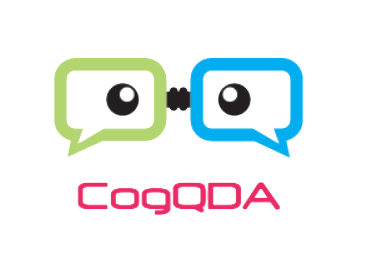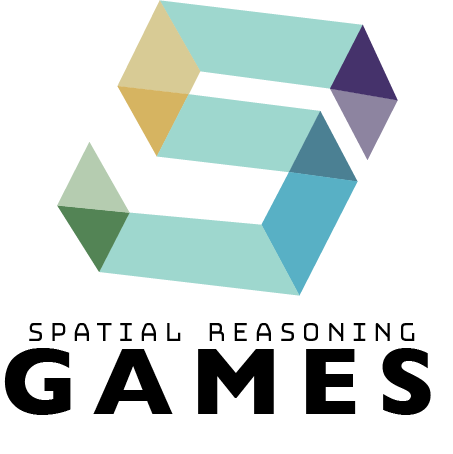
Test your spatial reasoning abilities by participating in an online survey!
Responses from this survey will be collected and used in a study.
How do we test spatial reasoning?
Spatial cognitive skills that are presented in many disciplines, such as engineering, science, mathematics, medicine, and design can be assessed using tests. These tests usually concentrate on mentally spatial visualization skills, which describe the ability to mentally rotate, transform, change the orientation, and otherwise manipulate mental images of objects1.
Spatial visualization is the foundation of spatial reasoning tests, which require participants to conduct a variety of mental movements on objects, such as rotation, transformation, reflection, and imagining the folding and unfolding of the objects2. It’s easy to understand why spatial reasoning is closely linked to mathematics, however it is also used in everyday life when we conduct activities such as parking a car, folding our laundry, packing a suitcase, or even brushing our hair in a mirror.
One of the most important developments in spatial reasoning research was the disproving of the previously-accepted notion that these skills are innate and we cannot improve them. Numerous studies have now found that everyone, regardless of age or initial skill level, can improve their spatial reasoning ability through practice and training activities3. Since research has shown that video game training enhances cognitive control4, practising spatial reasoning skills and spreading awareness of its importance is a key goal of the video games we have created.
The games we have developed are based on three different models of spatial reasoning tests:
- 3D Perceptual Ability Tests
- Paper Folding Tests
- Cube Comparison Tests
3D PAT - Q3D Game:
When playing the Q3D Game, players will encounter a section where they are given two views of an object and asked to correctly identify the corresponding third view. These questions come directly from 3D Perceptual Ability Tests (PAT), which require participants to imagine a 2-D drawing as a 3-D object and perhaps apply some mental rotations in order to find the third view.
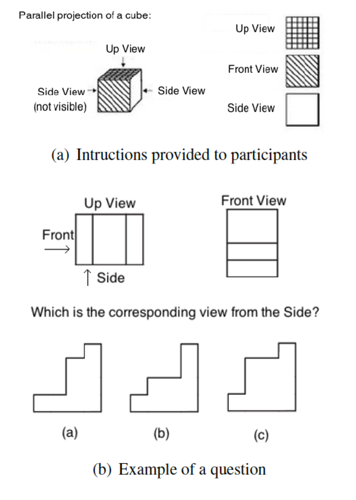
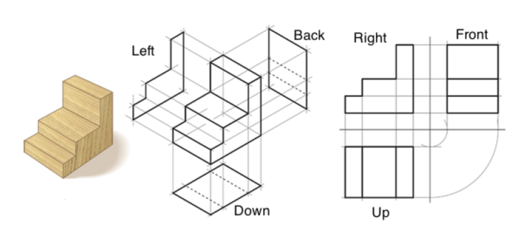
Paper Folding - Paper Folding Game:
The paper folding game very closely resembles paper folding tests, with the added advantage of demonstrating the actual folds through animations. On standard tests, the participant must not only deduce which answer is correct with regards to both the amount of holes and their placement, but must also figure out how the paper is folded in order to answer the question at all. This requires participants to imagine the initial folding of the paper, and then the unfolding of that same paper after the hole has been punched (see Figure 2).
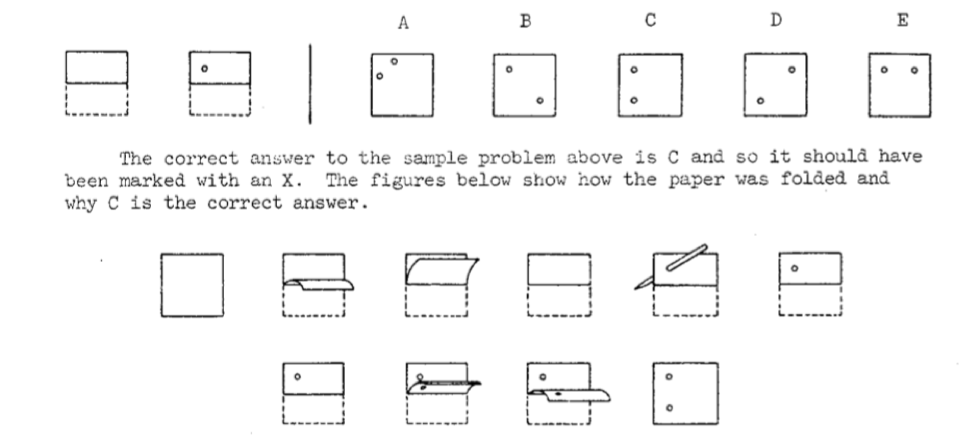
Figure 2 shows an example of a question given to participants with the possible answers. The bottom drawings demonstrate the thought process that participants follow to answer the question, beginning with figuring out which direction the paper was folded in order to attain the location where is was punched, and then unfolding the paper along those same folds to imagine the number and location of the holes.
Cube Rotation and Comparison - Hunting Treasures Game:
In the Hunting Treasures game, players must indicate whether two cubes presented to them are the same or different, which reflects the Cube Comparison Test developed in 19764. Participants must deduce whether the second cube is a plausible rotation of the first one. Each side of the cubes have different drawings on them.

In Figure 3, the first set of cubes should be marked as “different” because the orientation of the letter “P” doesn’t correspond with the rotation that the cube underwent. The letter “G” moved from the front side to the top side, and so the letter “P” should have been rotated 90 degrees. The second set of cubes should be marked “same” because the orientation and location of each letter correctly corresponds to the rotation that the cube underwent.
References:
- 1. Lovett, A. and Forbus, K. (2011). Cultural commonalities and differences in spatial problem-solving: A computational analysis. Cognition, 121(2):281 – 287.
- 2. Workman, J.E., & Lee, S-H. (2004). A Cross-cultural Comparison of the Apparel Spatial Visualization Test and Paper Folding Test. Clothing and Textiles Research Journal, 22(1/2), 22-30.
- 3. Sorby, S.A.: Educational research in developing 3D spatial skills for engineering students International Journal of Science Education 31(3), 459–480 (2009)
- 4. Spence, I., Feng, J.: Video games and spatial cognition. Review of General Psychology 14(2), 92 (2010)
- 5. Ekstrom, R.B., French, J.W., Harman, H.H., & Derman, D. (1976). Kit of Factor-Referenced Cognitive Tests. Educational Testing Service, Princeton, New Jersey. 248-250 and 286-288.


